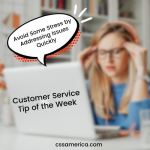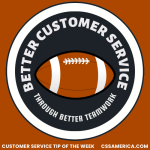
Rick went on sick leave, hating to miss out on his great relationships with his co-workers for a few weeks but knowing he needed to get himself better. Eventually his health improved, but when he returned, he had resentment against the company.
Although an occasional co-worker would text Rick to check on him or bring him a meal at home, his direct supervisor never reached out. No manager ever communicated with Rick in any way. “They preach caring, collaboration, support, and relationships at work,” Rick thought to himself, “but when you’re sick and at home, it’s like you don’t even exist.”
The local restaurant loved its regulars – they were not only good for business, but they were fun to have around, fun to develop relationships with, fun to just see every week. When a couple of the best customers – Dave and Deanna Lundy – didn’t show for their usual Thursday happy hour or their Sunday brunch for a few weeks, one of the managers and their favorite server noticed. But that’s all they did – they just noticed.
Dave and Deanna had taken a week’s vacation, and then Deanna had gotten sick – even had a brief hospital stay. She was better now, and they decided to try a new restaurant on Thursdays and another on Sundays – for some reason, they didn’t feel the same strong pull to go back to the local place they had patronized for years.
Too often we view customer service as something to do just “in the moment,” reacting to something requested or to an issue presented. But if part of delivering great customer service requires that we care about the other, it should move us to act even when the customer’s not right in front of us. We should be moved to reach out to the co-workers not around. We should want to know if our “regulars” are okay. We should convey we care about them even if they’re not accomplishing a task at work or paying us money for some product or service.
Notice those that are missing, and care enough to serve them when they’re absent.
Signup for FREE Tips! Contact Us More Resources for You Visit Our Home Page























